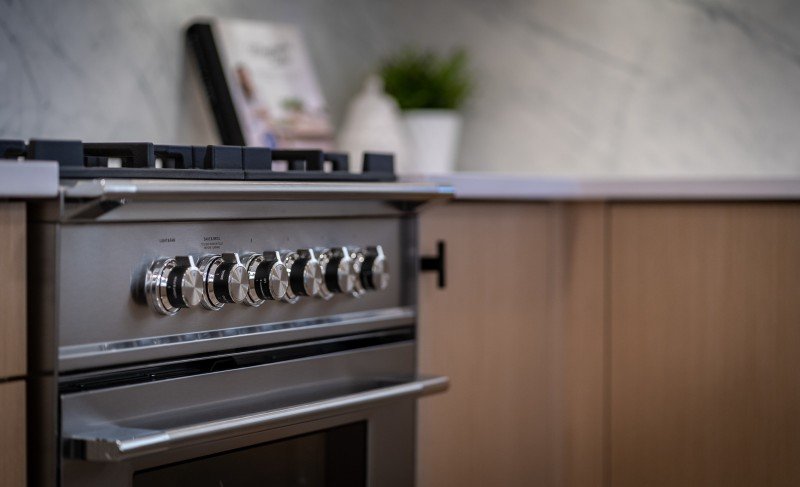
Oven Hob
Add a review FollowOverview
-
Founded Date September 11, 1971
-
Sectors Business, Consulting / Management
-
Posted Jobs 0
-
Viewed 3
-
About company
Company Description
The Top Reasons People Succeed In The Electric Oven & Hob Industry
Understanding Electric Ovens and Hobs: Your Guide to Cooking Efficiency
Electric ovens and hobs have actually transformed the cooking landscape, providing home cooks and professional chefs a reliable, efficient, and consistent method to prepare meals. As technological improvements continue to influence appliance style, the performance and functionality of electric cooking systems have actually substantially enhanced. This post looks into the features, advantages, and considerations surrounding electric ovens and hobs, offering an extensive overview for anyone wanting to upgrade or purchase kitchen home appliances.
What Are Electric Ovens and Hobs?
Electric ovens are kitchen devices developed for baking, broiling, roasting, and other cooking approaches that need controlled heat. They use electric coils or radiant heat components to generate and keep the desired temperature. Electric hobs, often described as electric cooktops, are flat surfaces with heating elements that permit pots and pans to be placed directly on them for cooking.
Table 1: Key Differences Between Electric Ovens and Hobs
| Function | Electric Oven | Electric Hob |
|---|---|---|
| Main Function | Baking, roasting, broiling | Heating pots and pans for cooking |
| Heating Method | Electric coils or radiant components | Induction, glowing, or ceramic elements |
| Operation Temperature Range | Approximately 500 ° F (260 ° C | ) Varies by design; normally lower than ovens |
| Cooking Styles | Versatile; ideal for different meals | Mainly stovetop cooking techniques |
| Area Requirement | Generally built into Kitchen Innovation cabinetry | Often standalone or integrated choices |
| Energy Consumption | Usually higher, depending upon use | More energy-efficient with induction hobs |
Advantages of Electric Ovens and Hobs
When thinking about electric ovens and hobs, it’s important to understand their various benefits, which can boost the cooking experience.
1. Consistent Heating
Electric ovens and hobs supply even and constant heating, which is vital for numerous cooking strategies. This guarantees that dishes cook uniformly, lowering the chances of overcooking or undercooking certain locations of food.
2. Security Features
Modern electric ovens and hobs come geared up with various security features to avoid accidents in the kitchen. For example, lots of models consist of automated shut-off functions, hot surface area indications, and child safety locks.
3. Easy to Use
Unlike gas models, electric ovens and hobs are uncomplicated and user-friendly. The simplicity of switching on a dial or pushing a button makes them available for cooks of all skill levels.
4. Versatile Cooking Options
With numerous cooking approaches possible, from baking to simmering, electric designs are flexible enough to accommodate a wide variety of cooking styles and preferences.
5. Cleaning and Maintenance
Electric ovens normally include smooth surface areas that are simple to tidy, especially designs with self-cleaning capabilities. Hobs, particularly induction types, likewise offer a flat surface area that is simple to clean down, making upkeep a breeze.
Popular Types of Electric Ovens:
- Conventional Ovens: Ideal for standard baking and roasting.
- Convection Ovens: Circulate hot air for faster, even cooking.
- Microwave Ovens: Use electro-magnetic radiation for fast heating and cooking.
- Toaster: Small countertop ovens for fast jobs.
Popular Types of Electric Hobs:
- Induction Hobs: Utilize magnetic fields for fast heating and energy effectiveness.
- Glowing Hobs: Feature electric coils that warm up to prepare food.
- Ceramic Hobs: Offer a smooth surface area and are easy to tidy.
Factors To Consider When Choosing Electric Ovens and Hobs
While electric ovens and hobs use numerous benefits, numerous aspects ought to be considered to make sure the right fit for your kitchen:
1. Space Availability
Assess the available kitchen area before making a purchase. Identify whether you require a built-in model or a freestanding appliance, and measure the dimensions thoroughly to ensure a good fit.

2. Cooking Needs
Recognize your cooking practices and preferences. If you frequently bake large quantities or cook complex meals, think about an oven with innovative functions like convection settings or numerous racks.
3. Energy Efficiency
Look for energy-efficient models that can help conserve on utility expenses over time. Energy Star-rated devices can be especially affordable.
4. Budget
Set a realistic budget that represents both the initial purchase and ongoing operating expense. In addition to the home appliance cost, element in setup and prospective repairs.
5. Extra Features
Think about whether features like smart technology, programmable settings, or steam cooking choices are crucial for your cooking style.
FAQ Section
Q: How do I tidy my electric oven?
A: Most electric ovens included self-cleaning options. If your design does not have this function, allow the oven to cool, then clean down surface areas with a mix of baking soda and water or a commercial oven cleaner.
Q: Is induction cooking safe?
A: Yes, induction cooking is thought about safe as the heating component just activates when compatible cookware is in contact with it, decreasing the risk of burns.
Q: How long does it consider an electric oven to preheat?
A: Preheating times differ based on the oven’s model and temperature level setting however normally range from 10 to 15 minutes.
Q: Can I utilize any pots and pans on an induction hob?
A: No, only ferromagnetic pots and pans works with induction hobs. Look for induction compatibility before use to prevent damage.
Q: What is the distinction in between a stove and a conventional electric oven?
A: A stove includes a fan that distributes hot air, ensuring even cooking and decreased cooking times compared to a traditional electric oven, which does not have this function.
Electric ovens and hobs supply a modern-day solution to different cooking needs, offering performance and reliability in the kitchen. As customers examine their alternatives, comprehending the features, types, and factors to consider will enable them to make educated decisions. Whether one is an occasional cook or a culinary lover, electric appliances can improve the overall cooking experience, bringing convenience and creativity to the table.


